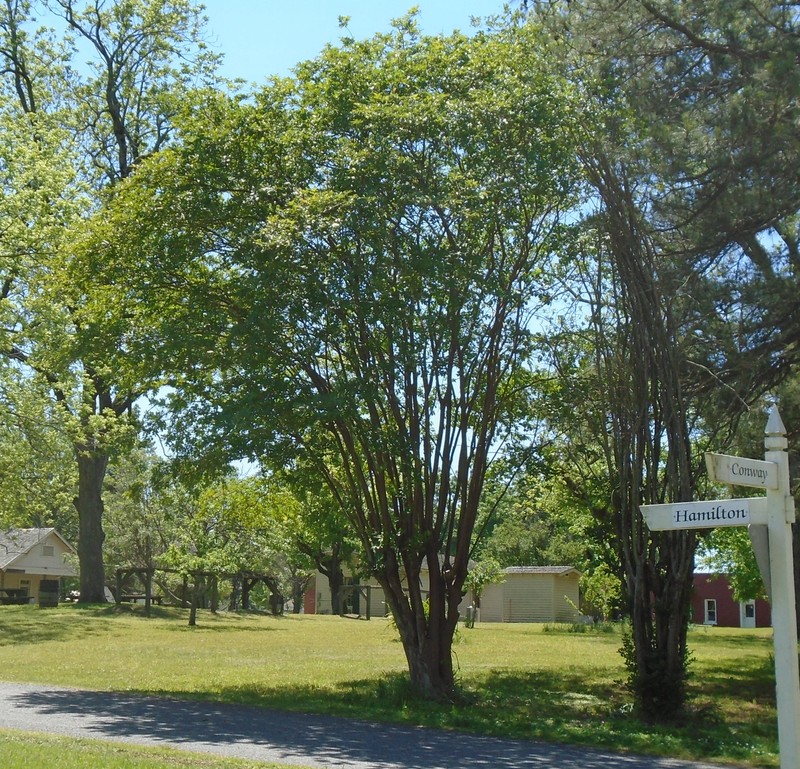Crape Myrtle
Introduction
Text-to-speech Audio
Crape myrtles are trees native to Asia imported at the turn of the 19th Century. Crape myrtles are popular for their large colorful flowers, rich fall foliage, and the mottled look of its exfoliating bark. They are well suited for southern climates of the United States, even in drier weather.
Images
Crape Myrtle in spring

Crape Myrtle in late winter
.jpg)
Backstory and Context
Text-to-speech Audio
The crape myrtle, also spelt crepe or crêpe, gets its name from its long-lasting flowers which resemble crêpe paper. There's actually over fifty different varieties of crape myrtles, and the usually-shorter crape myrtle is popular as shrubbery, particularly as screens or borders. Their flowers bloom throughout the summer in a wide range of colors from deep purple to white. In the fall their small green oval-shaped leaves turn a brilliant red, orange, and yellow. Crape myrtles do best in warmer climates such as the American South, but they do need constant exposure to the sun to grow and bloom properly.
Sources
Branches in Time: Notable and Historic Trees of Old Washignton Historic State Park . Little Rock, AR. Arkansas State Parks, 2001.
Historic Washington State Park
